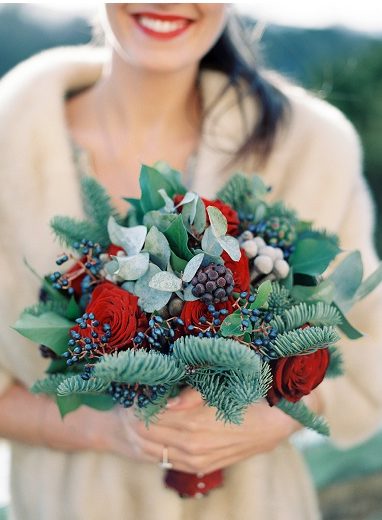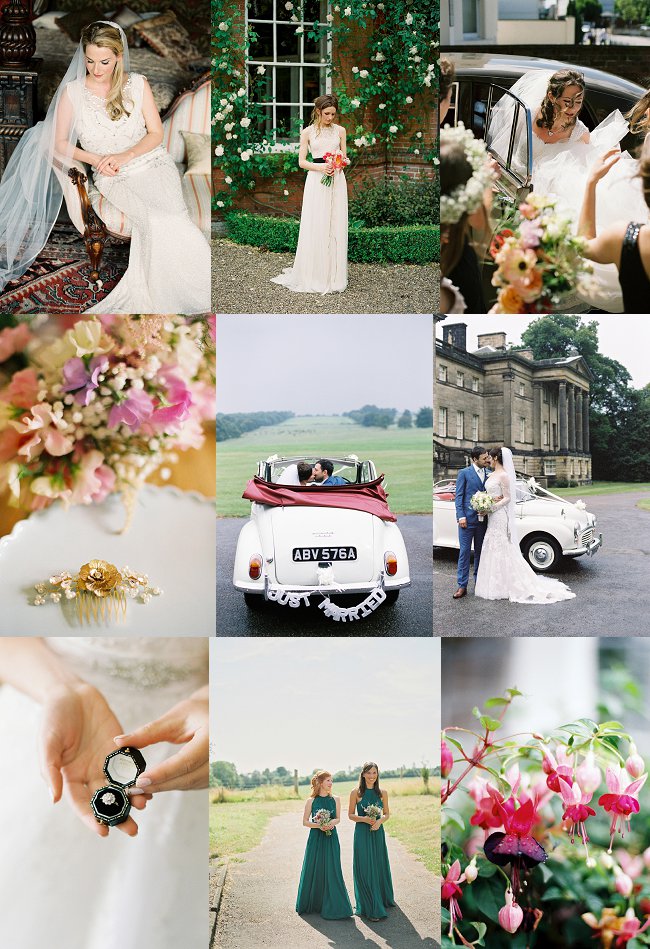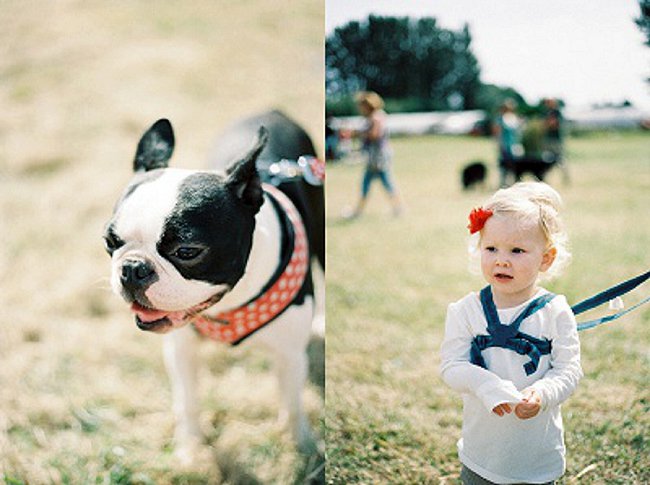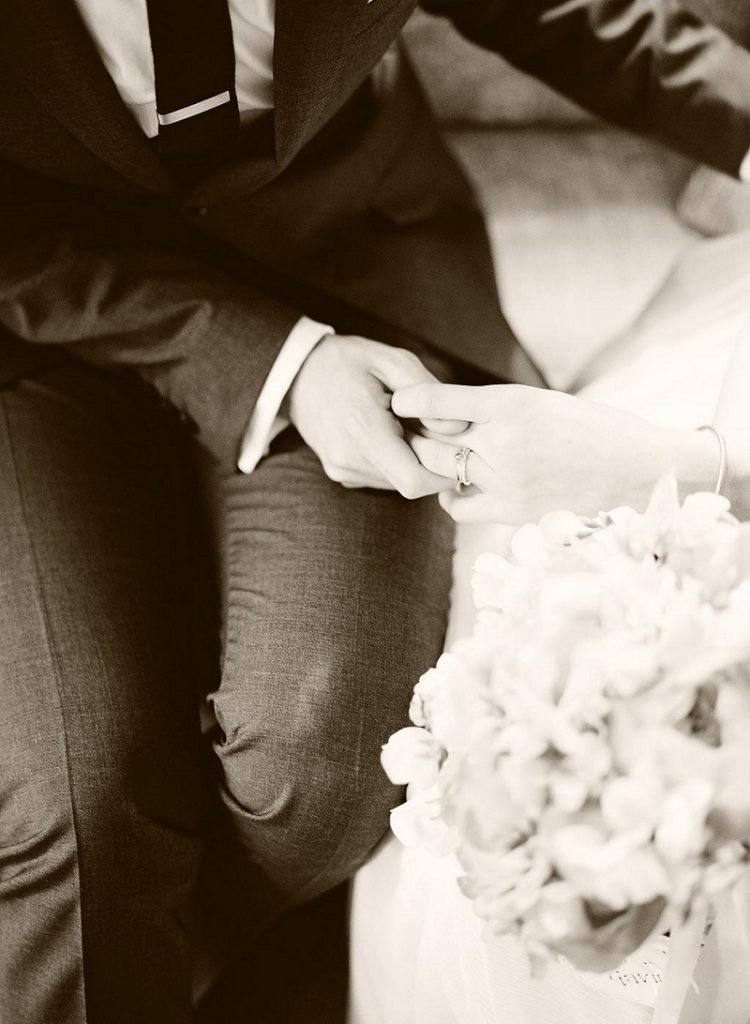
Get Started As A Fine Art Wedding Photographer – Kit And Equipment
Table of Contents
ToggleSharing is caring!
Reading Time: 12 minutesNow that we have established exactly what a fine art photographer is, (read the post here) and why fine art photographers attract high-paying clients – you're going to want to know what you need to get started as a fine art wedding photographer.
This is the essential kit and equipment you need – and yes, it's entirely possible to get set up on a budget!
How To Get Started As A Fine Art Wedding Photographer – Kit And Equipment
You’ve probably read Jose Villa’s book, or Elizabeth Messina’s, and drooled over those gorgeous images online, whether your favorite film photographer shoots light, dark, or anywhere in between.
So I probably don’t need to tell you about the equipment that these world-class photographers use – they’ve already done that in their books.
The Contax 645
The most popular film camera for fine art wedding photographers.
This popular choice is a medium format film camera, is becoming harder to get hold of, is at the top-end of the price points when it comes to film cameras (at least $2000) and when used in combination with the gorgeously both sharp-and-creamy Zeiss lenses, create stunning film photography images.
You can find out more about the Contax 645 here if you're a person who loves the technical specs.
So it's no surprise then, being the top-of-the-range film camera, that pros such as Elizabeth Messina, Jose Villa, and all the other film photographers regularly cite this as their go-to camera.
Contax 645 Alternatives
Not all of us can afford to splash out 3k on a Contax 645 camera kit, especially if we are just considering or have just begun to dip our toe into the water of film photography.
And even if we could afford it, it doesn’t always mean that we will end up with images like Villa which is why there is only one Jose Villa, and a whole lot of Contax 645 owners.
Instead, I am recommending to you the kit that I have used (and still use) for my journey into film photography.
It is affordable, completely brilliant, and for the mainpart, completely idiot-proof to use. Honestly. It really is.
Whilst the thought of owning the Contax kind of scared the life out of me when I first started because I wasn’t sure if I had any idea about how to use it properly (and 3k is somewhat of an expensive experiment), I found these cameras held my hand for the entire journey.
These are my recommendations for a few great film cameras + kit to buy if you are just starting out and wondering what to purchase
The best alternative to the Contax 645? The 35mm Canon 1vHS
Yes, the Canon 1v isn't a medium format camera! However it's a beast to carry around if you add on the extra battery pack, and almost as heavy as the 645!
Jose Villa says of this camera that ‘it’s almost as good as the Contax’ – and it really is.
I use mine with my prime lenses, the 50mm 1.4 and the 24mm 2.8.
I paid just over £200 for mine but you can get the non HS version for even less (and I really don’t think the High Speed version is too much of a noticeable difference, if at all),
– if you shoot Canon already it will take most of the lenses that you already own,
– and it is so simple and easy to use.
It's also cheaper to use. You won't need to splash out on those short little pricey rolls of 120 film, that barely anywhere supplies anymore – you can still pick up black and white film that creates amazing images on this camera from your local drugstore or pharmacy!
My one tip with this camera is to buy one with a battery grip, or purchase the battery grip as an extra, to ensure you have enough power to last all day. (You definitely will with one of the battery grips, they last forever)! You're going to need that all day power for shooting an all-day wedding.
These are some examples of images I've shot at weddings using my Canon 1v.

Contax 645 vs Mamiya 645AF
Apparently, the word is, you’re not a real photographer unless you use manual focus.
Actually, that’s not the word at all, I made that up entirely, but you’d be forgiven for thinking that it was because it is so often talked about by top-level fine art film photographers.
Obviously, manual focus gives you more control, but when you are starting out it is just one more thing to think about on top of lighting, film speed, framing, etc, all without being able to check the back of your camera.
Thankfully, the Mamiya 645af does what it says – it has good, solid autofocus.
The autofocus isn't lightning quick, and is pretty noisy when it focus hunts, (it practically defeaned an entirely silent church once when I was shooting the couple in dim light)
but it does the job overall pretty well.
I haven’t found any specific situations where it struggles, though like most film cameras, if you put it in a very dark / tight place where the light is pretty poor or you have to get up very close to your subject, it might have a few issues.
These are some examples of Mamiya 645AF shots. As you can see when compared to the Canon, they have a much richer, somewhat darker tone which I love – but it is noticeably different to the ‘light, pretty, fine art' look.

These are the two main cameras that I use for client sessions, but I also have seen fabulous work from owners of the Pentax 645n, the Nikon F100 (35mm) and the Canon AE1 (35mm). As long as the camera is in good working order, these are all wonderful cameras that I have seen produce great results.
Best Film Cameras For Fun
I also use a whole range of other film cameras for play and for experimentation
(playing and experimenting doing personal work is essential if you want to improve as a film photographer, and also stay in love with your business, so many photographers fall out of love with their work because they forget to stay creative and that photography is about fun and seeing the world with curiosity, not about money and business)!
ranging from Holgas and Diana cameras to polaroids, square format cameras, and a whole load of other cameras inbetween. Just as a side note, generally, medium format cameras tend to be larger, heavier, and louder than their 35mm counterparts.
Rangefinders are another type of camera that you are probably more than aware of, the great Leica being one of the more famous examples. The Leica M6 is another one of those cameras I have heard wonderful things about but have yet to try.
Warning; film cameras can be an expensive addiction.
Do you think GAS (Gear Acquisition Syndrome) is bad in digital shooters? Wait until you chat with a few more film photographers. Currently, on my wish list, I have the soviet made Kiev 4a, the contax g2, the contax t2, the Yashica t4, the Diana (Paris Edition), and I wouldn’t mind the Mamiya 7 or any sort of Leica either (the Leica Mini II looks like a real cutie at the moment).
I also often toy with the idea of buying an Olympus Trip 35, a Konica Hexar RF, a canonet, and a Canon ae. You have been warned!
I have also heard of a camera that seems to be pretty popular lately, the Contax somethingorother…
But I have hoped these examples have shown that you definitely do not have to own one of these to be able to start out shooting absolutely great images in film photography, whether that's for yourself, or for shooting fine art style weddings.
Do I Really Need A Medium Format Camera?
You do not have to have a medium format camera to be a good, or even a brilliant, photographer. Henri Cartier Bresson managed just fine without one.
Medium format cameras, because they do give that extra detail and 3D effect mentioned in the breakout box above have become pretty popular again amongst wedding photographers.
Because medium format cameras capture more detail they can appear to capture more light; which when wrapped around the subject (who already looks different to being shot on a 35mm camera), produces a distinct look which is realistic yet dreamy, full of beautiful colour tones, and detail.
But, having a medium format camera is not essential to this.
In particular, I love using my 35mm particularly when
*I need more speed and to focus accurately and quickly (my Canon is has lightning focus speed, my Mamiya… not so much)
*I want to shoot black and white and my Mamiya is being used for colour
* I need to let in more light (I have the 50mm 1.4 on my Canon most of the time. I have the 80mm 1.9 for my Mamiya but I could write an entire ebook on that lens all by itself. Basically, focussing with that takes a while / lots of practice and even then sometimes I still want that extra light given to me by the 1.4, and especially if I need it in combination with quick focussing).
* I know I am going to need more than 16 frames and am not going to have much time to be able to fiddle about with film (bride walking down the aisle, greeting her beloved, taking her place being one such example)
So if you need more speed, quick focussing, the choice of being able to shoot both colour and black and white in the same scenarios, and lots of shots for a particular situation, I would advise 35mm as a great choice.
For portraits, medium format is a clear winner, but some 35mm cameras are not too far behind in what they produce especially when coupled with a great film + a great lab.
The Best Lenses For Wedding Photography On Film
I wanted to get set up and shoot film as quickly and as easily as possible. So I chose the Canon 1vHS as my #returntofilm camera, as it allowed me to use all of the lenses I had been using with my digital Canon.
I then didn’t have to spend a lot of time worrying about which lenses to purchase and spending hours of time researching.
I shoot with prime (fixed) lenses, as I like the look they give, I like the way they let in a ton of light, (which gives images that dreamy look) and I like working at a relatively close distance to my subjects.
My lenses that I have mounted on my 35mm are
*50mm 1.4 I use for portraits, detail shots, any reportage style shots, perfect for darker venues/situations when I can’t get enough light on the Mamiya
*24mm 2.8 Use mainly for landscape / scene / exterior shots
The lenses I have on my Mamiya
*80mm 2.8 Use for everything and it is amazing at everything.
*80mm 1.9 Use for everything, when I want to really get more light in, and a bit more bokeh. Brilliant lens when I manage to focus it.
I have often considered buying other lenses. I lust after the 50mm 1.2, which is often mentioned as having a few focus issues when on a digital body, but I bet would be amazing on my 1v! I’d also like to try the 85mm lens and the 35mm lens on the 1v,
(the 85mm is meant to be a great portrait lens some consider it the best and the 35mm just avoids that slight distortion I get from the 24mm if I ever have it on to shoot a portrait) although overall, I am pretty happy with these lenses and have not been able to fault any of them when mounted onto my film bodies.
Accessories For Film And Fine Art Wedding Photography
Other purchases that you might want to consider (but aren’t necessarily essential to starting to shoot film are)
1) A decent camera bag.
Film cameras are heavy! I actually found mine from a UK-based highstreet fashion chain a while ago and it is the only bag roomy enough to fit in three camera bodies and my lenses and my flash and all of my film and still look relatively good. (Check out the story of that bag here, and see our recommended camera bags under $100)!
However I would like to buy one of these perhaps one day soon, as I can’t really hang two cameras around my neck or cart my bag everywhere, and handholding is getting a bit frustrating.
2) A Sekonic Light Meter
Note – I'm one of those people who buys things people tell me to and then have a habit of finding shortcuts or never using them. My cameras, even the Mamiya, seemed to have decent-enough built-in light meters, that rarely let me down.
Plus, once you get used to metering, you'll be able to read know almost instantly what likely reading a light meter would give, and you'll be able to meter accordingly. It's really not that difficult to know that dark / darker situations require more light, so you can open up your Tv and/or aperture, accordingly. In wildly dark situations, max up both. In pitch black situations, put down the camera, simple.
3) Hoya CloseUp Filters.
Essentially, the poorman's macro lens. For around £20 you get a set of filters that fit your current lenses to produce a great close-up shot. Brilliant. Yeah… I never bought these either, but everyone seems to recommend them.
The Best Film Choices For Getting Started In Film Photography or Fine Art Weddings
Film choices? You got two of ‘em.
Well actually you have a load more, but if you want to keep it simple when first starting out then narrow it down to Kodak Portra (400 or 800) and Fuji 400h.
These professional films read and react to light in entirely different ways, and you can read about that in places other than here. What you need to know, is how it makes your images look.
These are the films I use on a regular basis
Colour Film For Shooting Weddings, Newborns, Or Engagement Sessions.
Fuji Pro 400h
Is beautiful, makes green colors look entirely amazing, and has a teeny bit of a peachy hint to it. I rate it at 200 or below. My absolute favorite film, this is why. Just look at those incredible colors, and this was shot at incredibly low light, in the middle of winter!

Portra 800
I have a love/hate relationship with Portra 800. Converts rave on about how great it is at all sorts of speed but it has been a little too warm-toned for me on occasion and a bit contrasty, and a bit punchy in terms of color.
But I have also had images back that I really, really love and are often even nicer in tone than the 400h. So I always have some of this to hand, especially in darker situations.
Kodak Gold 200
My budget beauty. I buy it for £2 a roll on ebay, usually in packs of 10. I can’t describe why I like it, I just do. It's actually one of my favourite films, the only time I wouldn't use it as on darker days – but for bright days, it's lovely! It works indoors too – yep, even without flash.
I rate it really, really low, usually at 50 so this film needs a fair bit of light. Don’t be afraid to use it indoors with some good window light.

The Best Black And White Film
Ilford XP2
Crazy in love with this film! Such a smooth grain, I love how it looks when printed sepia. You have to be careful that you don’t over expose too much though, I haven’t yet found that sweet spot where it looks good with a little bit of overexposure, if there is one.

Though that doesn’t really matter. Black and white film generally looks great shot at box speed.
Other Films To Consider
Colour Portra 400 (a bit punchier and stronger color than Fuji 400h) and can be rated at higher box speeds with great results; I would advise using with at least some window light where possible. And of course, make sure you inform your lab what speed you shot it at!
B/W TriX 400
What have I missed? Let me know your favorite films below!
Where To Buy Film Photography Equipment & Film
I shop on eBay. Seriously, I buy anything and everything for my photography there. I bought my Canon, my Holga, my polaroid, and all of my lenses, and I buy most of my film there too. A couple of pointers for shopping on ebay
Look for seller feedback and rating before buying. I don’t shop with anyone with no/very low feedback or a feedback score of less than 95%.
If you are buying used equipment, make sure the description is detailed. Ideally, the description should say that the camera is in great condition, brilliant condition, or works perfectly. Don’t buy a camera with known issues when starting out, unless they are purely cosmetic.
Ensure that any lenses are completely free of mold, fungus, and dust. It can be common with older lenses, but you do NOT want to buy anything with even the tiniest sign of mold/fungus, because it can spread pretty quickly and infest your camera and other lenses.
If you buy camera film from abroad, make sure the seller writes CAMERA FILM on the package. I have no idea whether this stops customs scanning your parcel or not, (which can apparently ruin some film) but I like to hope so!
You can also try local camera shops and camera shops online, though these obviously take a lot longer to search. If you are in the US KEH or B&H Photographic seem to have pretty good ‘Used’ items, though I bet their items get snapped up pretty quickly.
You can also check Facebook film photography groups.
So, that's the essential kit you need to get started with fine art weddings on film – a camera and some film!
Was this short guide useful?
A post by Charlie
Most Popular Posts:
Sharing is caring!
PLEASE COMMENT BELOW